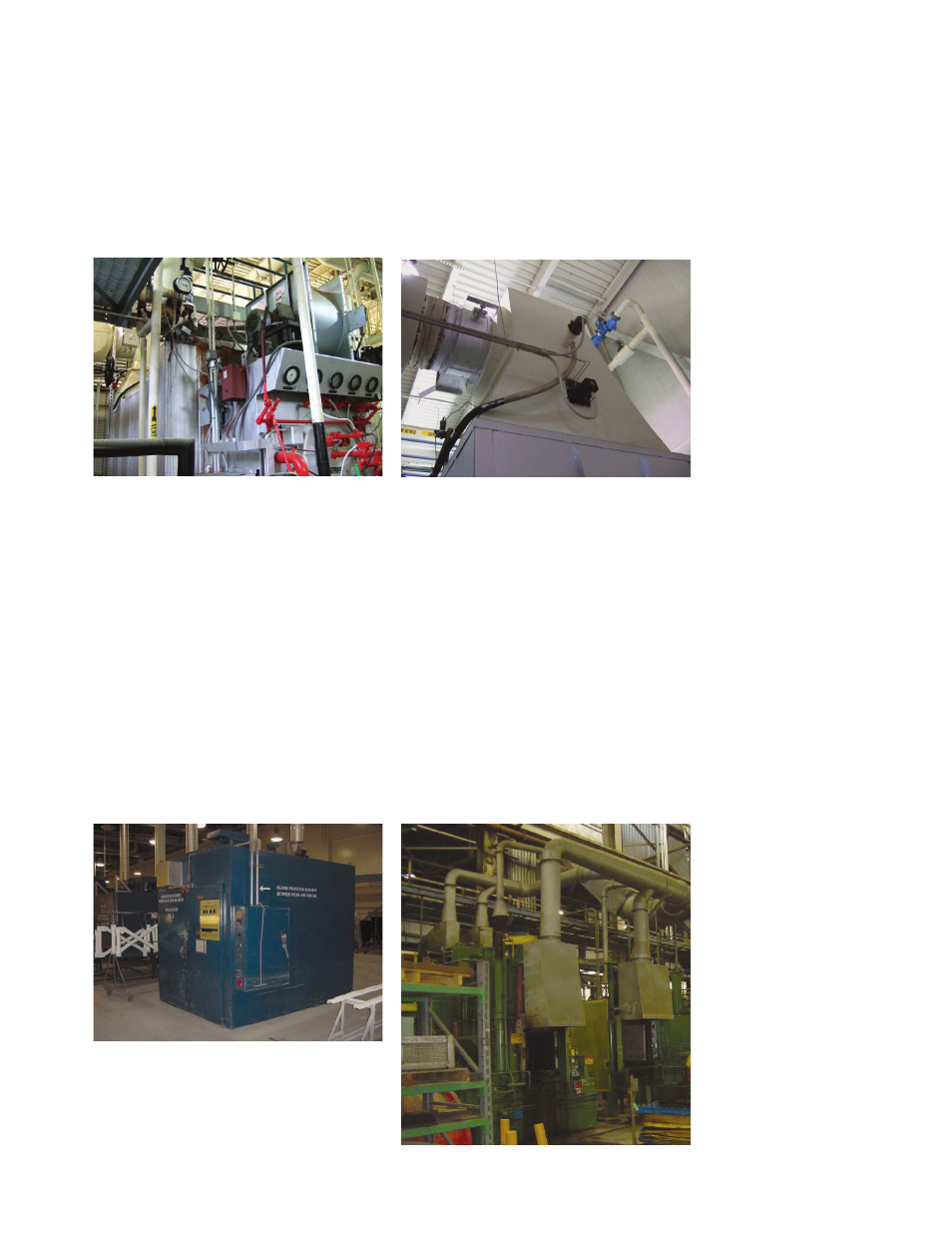Retrotec USACE User Manual
Page 251

Appendix D D121
wasteful. If too little oxygen is used, not all the fuel is converted to heat, and soot
can form on the furnace and in the breeching or stack. Not burning all the fuel is
wasteful, and the presence of soot will increase the potential of fi res. The burner
has nozzles and ports that are sized for mixing the fuel and air (Figure D190), and
these should be cleaned periodically, and replaced when required.
D.7.8.2 Improper Operating Dampers (Ineffi ciency)
Figure D192. Damper in breeching to stop air
fl ow when not operating.
Figure D191. Direct-drive induced draft fan to
provide air for burner.
Furnaces and ovens need the proper amount of oxygen (air) for optimum com-
bustion and effi cient operation. Air fl ows to the burner, and combustion exhaust
gases go up the stack. This air fl ow results from the heated air in the furnace
and oven plus the height of the stack. In large furnaces and ovens, a powered
blower (the “forced draft fan”) sends air to the burner (Figure D191). Damp-
ers in this air route control the amount of fl ow (Figure D192). If these dampers
do not operate correctly, poor combustion can occur. Excessive air results in a
waste of heat energy that results from raising the temperature of the unneeded
extra air; conversely, a lack of air causes incomplete fuel combustion.
D.7.8.3 Inoperable, Uncalibrated, or Poorly Adjusted Controls
(Ineffi ciency)
Figure D194. Heat treat ovens with controls
(to right of open doors).
Figure D193. Controls on oven in paint shop.
